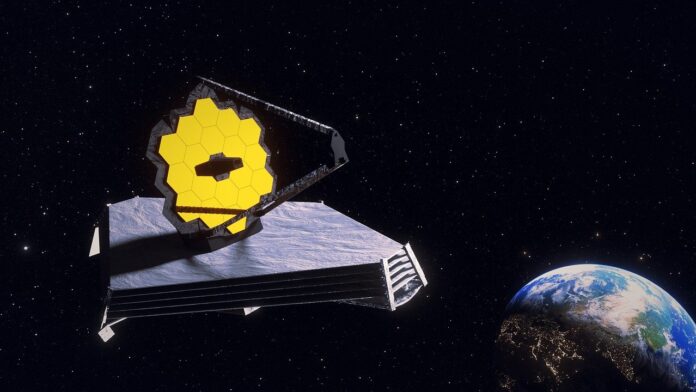NASA’s best kept secret has been revealed, at least in part. And now we have just learned what the content of some of the first images scientists of the James Webb Space Telescopewhich will be shown for the first time on July 12 and on which the scientists and technicians of the North American space agency had raised, until now, an impenetrable wall of silence.
It was the NASA Administrator himself, bill nelson, who last Wednesday, during a press conference at the Space Telescope Science Institute, took it upon himself to unravel the mystery. According to Nelson, indeed, on July 12 we will be able to see “the deepest image of our Universe ever taken”. Images that, for the first time, will reveal how the first stars and galaxies were formed.
“If we think about it Nelson continued. this is further than humanity has ever looked before”. The powerful space telescope, launched on December 25, is a true marvel of engineering, capable of seeing further than any other telescope has ever been able to. Its instruments, which operate in the infrared, can also penetrate through the dense clouds of dust and gas that get in the way of observation of the early Universe, more than 13.5 billion light-years away.
NASA’s James Webb Space Telescope
The James Webb, Nelson said in a telephone connection, since he is isolated by Covid, “It will also explore objects in the Solar System and atmospheres of exoplanets orbiting other stars, giving us clues as to whether those atmospheres are potentially similar to ours”. The telescope, he continued, “It can answer some of the questions we ask ourselves: Where do we come from? What else is out there? About us? And of course it’s going to answer other questions that we don’t even know what they are.”.
Webb’s infrared capabilities allow it to see back in time almost to the Big Bang, which occurred about 13.8 billion years ago. Because the Universe is expanding, the light from the first stars has shifted from the ultraviolet and visible wavelengths in which it was emitted, to the longer infrared wavelengths, which Webb is equipped to detect at a unprecedented resolution.
Currently, the most distant cosmological observations that have been achieved have taken us to see what happened some 330 million years after the Big Bang, but astronomers believe that the new space telescope will easily break that record.
more good news
Pam Metroy, deputy administrator of NASA, said for her part that thanks to the efficient launch of the telescope by Arianespace, the James Webb has saved enough fuel to remain active for 20 years, twice the useful life originally planned. “Those 20 years Metroy said.They will not only allow us to delve into history and time, but we will delve into science in general, because we have the opportunity to learn, grow and make completely new observations”.
But that is not all. In addition to the most distant photos of the Universe, on July 12 NASA will also show, as announced by NASA Principal Scientist Thomas Zurbuchen, the first spectroscopy data obtained by the James Webb of a distant exoplanet.
Spectroscopy is an irreplaceable tool when it comes to analyzing the chemical and molecular composition of distant objects, something that is achieved by dividing the received light into its main components. Each chemical element emits light in a specific color, which is the equivalent of its fingerprint.
By breaking down the light received from an object in a spectroscope, scientists see a rainbow of colors, with each color corresponding to a particular element. Thus, the spectrum of a planet can help characterize its atmosphere and other properties, such as whether that world has water or organic molecules and the elements found on its surface.
Window
“From the beginning Zurbuchen said. we will observe those worlds that keep us awake at night while we look at the starry sky and wonder: is there life elsewhere?
According to Nestor Espinoza, an astronomer at the Space Telescope Science Instituteprevious spectroscopies of planets carried out with current instruments are very limited compared to what the webb. “It will be like being in a room that is very dark -explains the astronomer- and in which you only have a small hole that you can look through. Now, with the Webb, we’ve opened up a big window, and we’ll be able to see all the little details.”.
Font: Jose Manuel Nieves / ABC
Reference article: https://www.abc.es/ciencia/abci-revelado-mayor-secreto-nasa-estas-seran-primeras-images-telescope-space-james-webb-202206301114_noticia.html













Add Comment